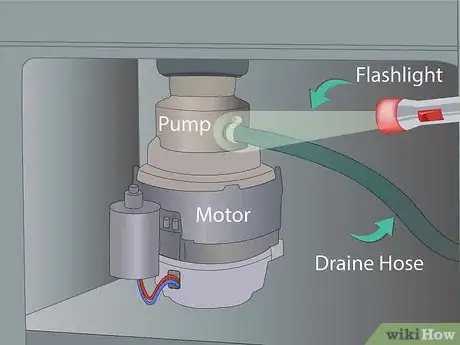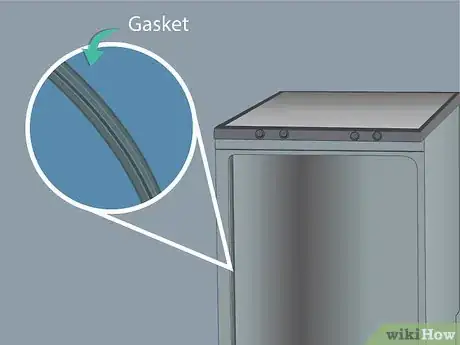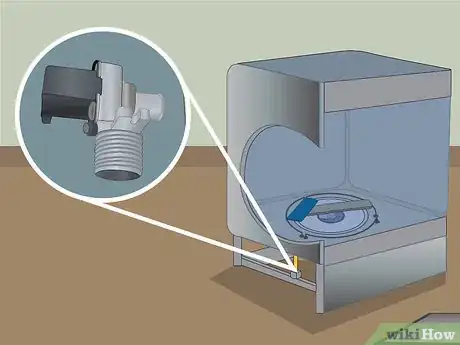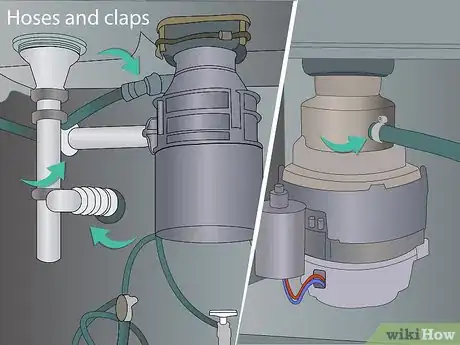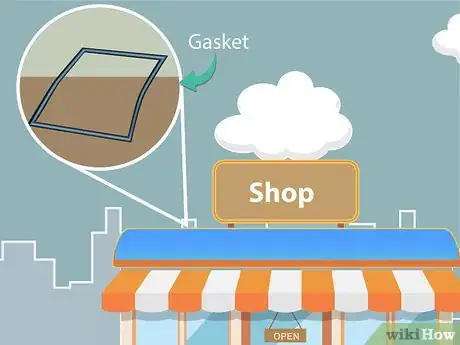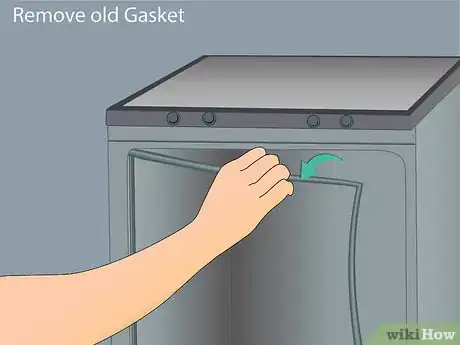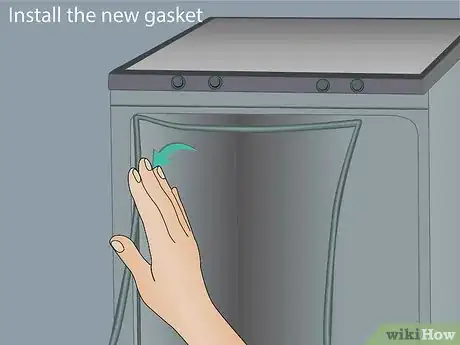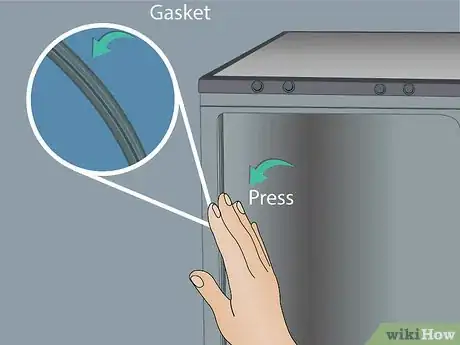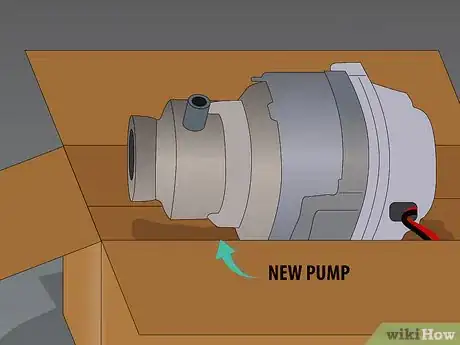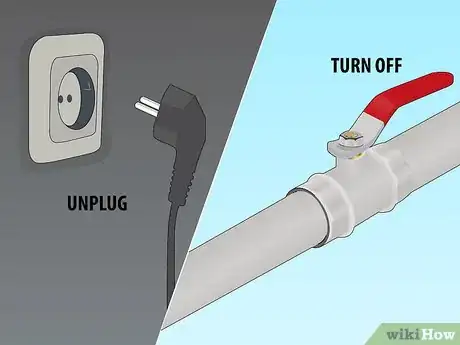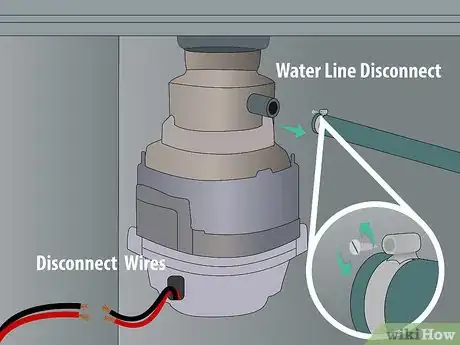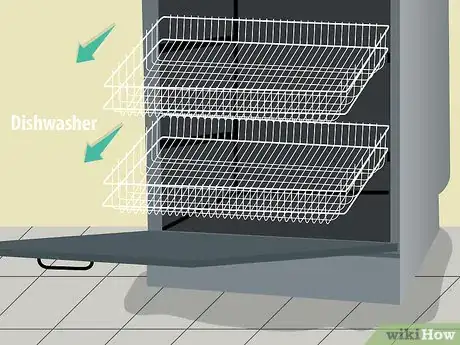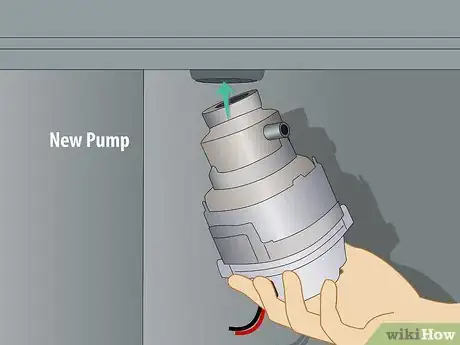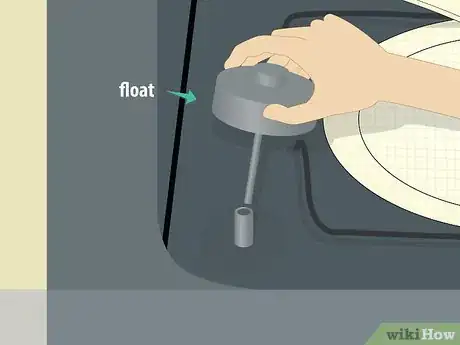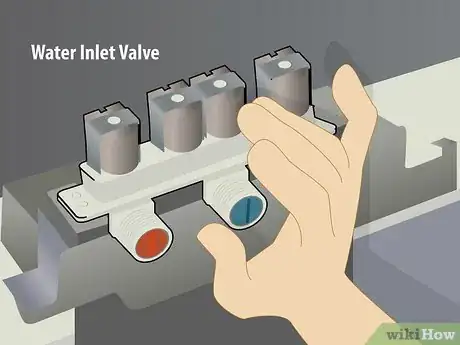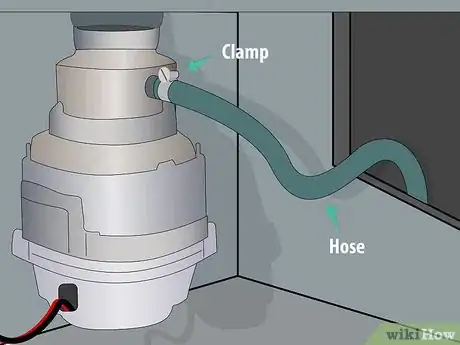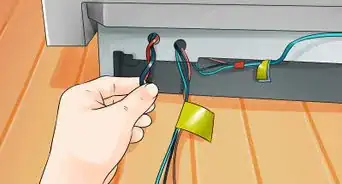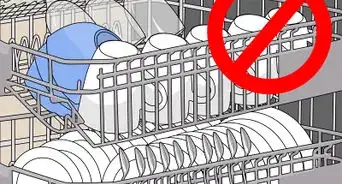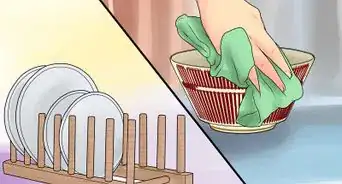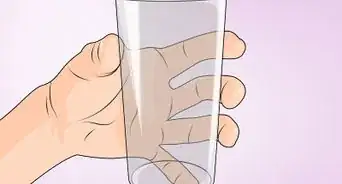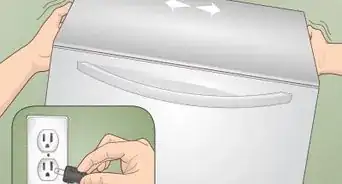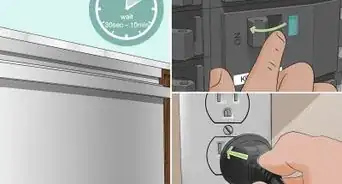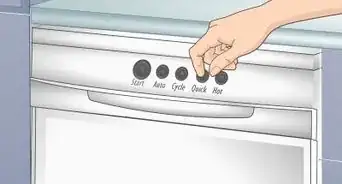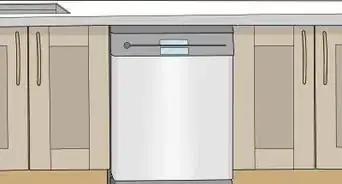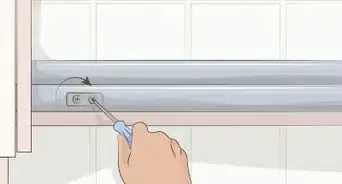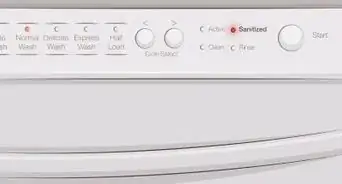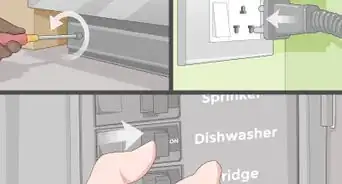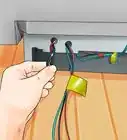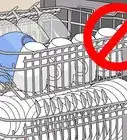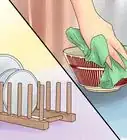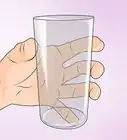This article was co-authored by Gevorg Grigorian. Gevorg Grigorian is an Appliance Repair Specialist and the Owner of G and R Appliance Repair in Los Angeles, California. With over 12 years of experience, Gevorg specializes in residential and commercial appliance repairs as well as heating, ventilation, and air conditioning (HVAC) services. Gevorg holds a BS in Business Administration and Management from California State University-Northridge.
There are 9 references cited in this article, which can be found at the bottom of the page.
wikiHow marks an article as reader-approved once it receives enough positive feedback. In this case, 92% of readers who voted found the article helpful, earning it our reader-approved status.
This article has been viewed 300,611 times.
You walked into your kitchen expecting clean dishes but instead found a sudsy puddle of water escaping from the dishwasher. Don't panic! Fixing a leaky dishwasher is usually something you can take care of yourself. This wikiHow will walk you through how to find and fix the source of the leak so you can get your dishwasher up and running again, leak-free.
Steps
Finding the Source of the Leak
-
1Remove the access panel from the front of the dishwasher. Most dishwashers have an access panel or kickplate on the bottom that covers the water inlet, pump, motor, and hoses. To remove the panel, use a screwdriver and loosen the screws attaching the panel to the unit. Turn the screws to the left (counter-clockwise) to loosen them.
- Removing the panel will help you find the source of the leak, which may be coming from underneath the dishwasher.[1]
-
2Check the pump. The pump and all its components are located under the dishwasher. Use a flashlight to inspect the pump, housing, motor, and the seal or gasket. Check for cracks in the pump or housing, and inspect the seal or gasket for damage.[2]
- When there's a problem with the pump or pump components, water will leak from below the dishwasher.
Advertisement -
3Check common leak locations first. Most dishwasher leaks come from around or under the door, but water may also be leaking from below the unit. Determining the source of the water can help you narrow down the possible causes.[3] Run the dishwasher through a normal cycle and watch closely to see where the water is coming from.
- Water leaking around or under the door could indicate a problem with the gasket, spray arm, or float.
- Water leaking from under the unit could indicate a problem with the pump, hoses, or water inlet.
-
4Inspect the door gasket. The gasket is a soft vinyl or rubber seal that makes the unit watertight when the door is closed. The gasket will either be on the door itself (around the sides and top), or on the tub opening. Check this for breaks, cracks, brittleness, or other signs of damage.[4]
- Water leaking from the sides of the dishwasher doors usually means there's a problem with the gasket.[5]
- The tub is the interior basin of the dishwasher unit.
-
5Check the spray arm. The spray arm is inside the dishwasher, at the bottom center of the unit. This is what sprays the dishes with water during the wash and rinse cycles. Inspect the spray arm for cracks, warping, blockages, or other damage.
- A problem with the spray arm usually causes water to leak from the bottom of the dishwasher door, where there's no gasket.[6]
-
6Check the water level. The float is a safety device inside the tub that determines the water level and prevents the dishwasher from overfilling. When the dishwasher is in mid-cycle and full, turn it off, open the door, and check the water level. The water shouldn’t be any higher than the heating element in the bottom of the tub.[7]
- If the water is higher than the heating element, there may be a problem with the float or float switch.
- When the float is the problem, water will often leak from the bottom front of the dishwasher.
-
7Inspect the water inlet valve. The inlet valve is also below the dishwasher, and this is what connects the dishwasher to your home’s water supply. It may be a rubber hose, a braided hose, or a copper pipe. When the dishwasher is filling up, check the valve and the connections for leaks, which could indicate a crack or tear.[8]
- Leaks or tears in the water inlet valve will come from below the dishwasher.
-
8Make sure the hoses and clamps are secure and intact. The hoses connected to the pump under the dishwasher allow water to flow from one area of the dishwasher to another, and drain water from the tub. When the dishwasher is running, check the hoses for leaks or drips.[9]
- A stray piece of glass or even a rodent infestation can puncture the tubing causing a leak.[10]
- When the hoses crack or tear, or when the clamps come loose, water may leak from the bottom of the unit.
Replacing the Door Gasket
-
1Purchase a replacement gasket. When the leak is caused by a damaged or brittle gasket, you can fix the leak by removing the old gasket and replacing it with a new one. Make sure the replacement gasket you purchase is manufacturer-approved, and that it matches the make and model of your dishwasher.
- A gasket that’s not made for your dishwasher may not fit properly, and this means it won’t form a proper seal and will continue to leak.
-
2Remove the old gasket. Open the dishwasher door. Start at the bottom left corner, and pinch the gasket firmly with your fingers. Loosen the gasket out of position, and peel it away from the edge of the door or tub. Continue peeling until you have removed the gasket from its position.
- Pay attention to the orientation of the gasket around the tub or door. The new gasket will have to be installed in the same way.[11]
-
3Clean the area. Fill a small bowl with warm water and a few drops of dish soap. Soak a cotton swab in the soapy water, and use the swab to clean the area where the gasket was. Once it’s clean, rinse the area with clean water. Wipe it dry with a rag and let the area air dry.
- This will give the new gasket a clean and dry surface to adhere to, and this will ensure a proper seal.
-
4Install the new gasket. Warm the new gasket with a blow dryer on a low heat setting. When it’s warm and malleable, fold the gasket in half and locate the center. Start at the top center of the door or tub, and press the middle of the gasket into position. Working out from either side, push the gasket into place.
- Don’t stretch the gasket as you work.
-
5Secure the gasket. Once the gasket has been installed, shut the dishwasher door to press the gasket firmly into place. Open the door to check the alignment. When you're satisfied with the placement of the gasket, shut and latch the door for a few hours to seal the gasket to the door or tub.
Replacing the Pump
-
1Purchase a new pump. Find a hardware store or appliance store where you can buy a manufacturer-approved replacement pump. Make sure the pump is compatible with the make and model of your dishwasher.
- Replacing a dishwasher pump is a somewhat complicated procedure, and you should call a professional if you're at all uncomfortable with the job or the tools.
-
2Cut the power and water. Unplug the dishwasher, or shut off the breaker that gives power to the dishwasher. This will protect you from getting a shock while you work. Turn off the water valve that supplies the dishwasher with water.
- Replacing the pump in the dishwasher involves removing and replacing the pump and the wiring, and you don’t want power running to the pump when you do this.
-
3Disconnect the wires and water lines. Unscrew the electrical nuts around the hot, neutral, and ground wires attached to the pump under the dishwasher. Unscrew the water line by turning the nut counter-clockwise.
-
4Remove the dishwasher from the cabinet. Use a screwdriver to remove the mounting bracket screws that hold the dishwasher to the cabinet. Flip the brackets down and slide the dishwasher out slightly. Reach under the dishwasher and detach the water disposal line. When this has been removed, pull out the dishwasher.
-
5Disconnect the old pump. Lay the dishwasher on its back. Unbolt the motor and harness assembly, and loosen the clamps holding the pump in place. Remove all the hoses, leads, and controls that are attached to the pump, and then pull out the pump and motor assembly.
-
6Install the new pump. Replace the pump and motor assembly with a new one. Tighten the clamps to hold it in place, and reattach the harness assembly. Reattach the hoses, leads, and controls.
-
7Reconnect the dishwasher. Right the dishwasher and slide it back into the cabinet. Reach under the dishwasher and reattach the water disposal line. Slide the dishwasher back into place and reattach the mounting brackets, water supply line, water, and wires. Plug the unit back in or turn on the breaker.[12]
Fixing Other Leaky Components
-
1Clean or replace the spray arm. Remove the lower rack from the dishwasher. Hold the base of the spray arm and unscrew it in a counter-clockwise manner. Remove the spray arm and clean it to remove blockages. If the spray arm is damaged, purchase a new one to replace it. Screw in the cleaned or new spray arm by hand-tightening it clockwise until you cannot tighten it any more.[13]
- When the cleaning or repair is complete, replace the lower rack.
-
2Change the float height. The float is a saucer-shaped device on the bottom of the tub. Under the float, on the bottom of the dishwasher, is the float switch that controls the water level. Change the switch to the higher position to change the float height and lower the water level in the dishwasher.[14]
-
3Replace a faulty water inlet valve. When a faulty or damaged water inlet valve is the cause of the leak, you can fix the leak by replacing the inlet valve. To remove the old valve, you'll remove the hoses, take out the screws, and remove the spring clamp. You can then replace it with a new water inlet valve.
-
4Tighten or replace a hose or clamp. To replace a broken or torn hose, release the clamps holding the hose in place. Replace the old hose with a new one, and reattach the clamps. Or, if the problem is a loose clamp, simply tighten the clamp where the connection was leaking.
Expert Q&A
Did you know you can get expert answers for this article?
Unlock expert answers by supporting wikiHow
-
QuestionWhy is my dishwasher leaking from the sides?
 Gevorg GrigorianGevorg Grigorian is an Appliance Repair Specialist and the Owner of G and R Appliance Repair in Los Angeles, California. With over 12 years of experience, Gevorg specializes in residential and commercial appliance repairs as well as heating, ventilation, and air conditioning (HVAC) services. Gevorg holds a BS in Business Administration and Management from California State University-Northridge.
Gevorg GrigorianGevorg Grigorian is an Appliance Repair Specialist and the Owner of G and R Appliance Repair in Los Angeles, California. With over 12 years of experience, Gevorg specializes in residential and commercial appliance repairs as well as heating, ventilation, and air conditioning (HVAC) services. Gevorg holds a BS in Business Administration and Management from California State University-Northridge.
Appliance Repair Expert
References
- ↑ https://www.ifixit.com/Answers/View/17051/How+fix+leaking+dishwasher
- ↑ https://www.youtube.com/watch?v=zDNiLvApKLc
- ↑ Gevorg Grigorian. Appliance Repair Expert. Expert Interview. 30 July 2020.
- ↑ http://www.partselect.ca/Repair/Dishwasher/Leaking/#pscomredirect
- ↑ Gevorg Grigorian. Appliance Repair Expert. Expert Interview. 30 July 2020.
- ↑ https://www.youtube.com/watch?v=zDNiLvApKLc
- ↑ http://www.partselect.ca/Repair/Dishwasher/Leaking/#pscomredirect
- ↑ http://www.partselect.ca/Repair/Dishwasher/Leaking/#pscomredirect
- ↑ http://www.appliancerepair.net/dishwasher-repair-4.html
- ↑ Gevorg Grigorian. Appliance Repair Expert. Expert Interview. 30 July 2020.
- ↑ https://www.youtube.com/watch?v=tpZVir9w32w
- ↑ https://www.youtube.com/watch?v=Hfvycw6gyKU
- ↑ https://www.youtube.com/watch?v=AJUk34IO1ig
- ↑ https://www.familyhandyman.com/appliance-repair/dishwasher-repair/how-to-repair-a-dishwasher/view-all
About This Article
To fix a leaky dishwasher, start by removing the access panel from the bottom of the front of the dishwasher. Then, use a flashlight to check the pump for any cracks or damage. If the pump looks fine, look around to see where the water is leaking from. If it's leaking around or under the door, it could mean there's a problem with the gasket, spray arm, or float. For water that's leaking from under the unit, you might be dealing with a problem related to the pump, hoses, or water inlet. To learn how to fix the leaky component in your dishwasher, scroll down!

